A new age for psychedelic science
In this first of a two-part series, I discuss the emerging scientific interest in the use of psychedelic medicines for neuroscience and therapeutic purposes. Researchers at major universities, research hospitals, and medical practices worldwide are seeking to learn more about the safety and efficacy of psychedelics in a modern, clinical context. Here at U-M in 2022, doors opened at M-PsyC, the Michigan Psychedelic Center, at Michigan Medicine.
Several clinical trials are underway worldwide and show promise for conditions ranging from depression to fibromyalgia. Preliminary research suggests that psychedelic-assisted psychotherapy produces lasting benefits and can change facets of personality that promote positive mental health.
Altered states
Psychedelics are a group of substances that change or enhance sensory perceptions, thought processes, and energy levels. These substances are also known as hallucinogenic drugs or simply hallucinogens. They come in different forms, ranging from chemicals such as LSD to plants like the peyote cactus.
‘Psychedelic’ derives from Greek words that refer to ‘mind-manifesting’ or ‘mind-revealing.’ The Greek ψυχή translates as psyche (or soul, mind), and δηλοῦν (dēlóō), translates to manifest or to make visible, to reveal. The term psychedelic was coined in 1956 by English psychiatrist H. Osmond to describe these ‘mind-revealing’ substances. Osmond favored the psychedelic term because it was “clear, euphonious, and uncontaminated by other associations.”
Several terms are used to refer to the plant, fungal, and synthetic medicines capable of causing non-ordinary states of consciousness that change an individual’s perception or awareness of their surroundings and alter thoughts and feelings. Terms include ‘entheogen’ (accessing the divine within), ‘hallucinogen’ (wandering in mind), ‘psychotomimetic’ (mimicking psychosis), ‘psychotogenic’ (inducing a psychosis), and ‘psycholytic’ (loosening the mind).
Psychedelics act by directly affecting serotonin 2A receptors known to alter human consciousness, as well as such biological functions as mood, cognition, reward, learning, and memory. Other neurotransmitters are also affected differentially by psychedelics, and therefore each psychedelic substance can have different psychoactive effects.
A little history
Shamanic cultures dating as far back as 5,000 years have featured naturally occurring plant psychedelics in healing and spiritual rituals. Evidence of mind-altering substances appears throughout ancient texts, primitive art, and oral histories. The legendary Soma, an intoxicating plant juice (possibly containing a hallucinogenic mushroom) is found in the Sanskrit texts of ancient Hindu India as an offering to the gods. The Greeks used a drink that likely contained the hallucinogenic Ergot fungi during various ceremonies. More modern-day usage of psychedelic plants by non-Western cultures includes the Amazonian use of Ayahuasca, a plant compound containing DMT.Many indigenous people of North America routinely used substances derived from the Peyote cactus during religious and other ceremonies. A Shaman, usually a respected elder of the tribe who acted as doctor and priest, led these rituals. Combining psychedelics with such non-drug techniques as drumming and chanting was discovered to induce a dreamlike state believed to open communication with the spiritual world. When practiced in groups, these cultures enjoyed a cohesive community effect and observed decreased levels of mental illness.
It is not only humans that show a natural tendency toward altering their state of consciousness. Many animals, from insects to mammals, are attracted to hallucinogenic plants and fungi, above and beyond the normal quest for food.
Hofmann’s bicycle ‘trip’

Hofman reported kaleidoscopic images and other sensations after intentionally ingesting LSD and riding his bike.
Swiss chemist and plant scientist Albert Hofmann was the first person to synthesize Lysergic acid diethylamide (LSD-25). He was working for Sandoz Laboratories in 1936, seeking to obtain a circulatory and respiratory stimulant. The project was shelved as unsuccessful, but Hofmann believed that his LSD-25 (his 25th iteration of the substance) contained properties missed by the initial laboratory testing.
Seven years later in 1943, Hofmann decided to resynthesize his dormant LSD-25. While working, he accidentally absorbed about 0.25mg of LSD-25 in his skin and recorded a remarkable experience that he attributed to the substance. A few days later, he ingested 0.25mg of LSD-25, with his assistant’s knowledge this time. Hofmann dosed himself at 4:20 p.m., diluting the substance in 10cc water. He noted it was tasteless. At 5 p.m., he wrote in his journal, “Beginning dizziness, feeling of anxiety, visual distortions, symptoms of paralysis, desire to laugh.” The journal went dark after that.
Two days later he wrote his “trip” had been most intense from 6-8 p.m. – and that during that time, he rode home on his bicycle. Intuitively, he had asked his assistant to escort him home. During this infamous bicycle ride, Hofmann tapped into the psychedelic effects of the drug and detailed the event in his book LSD, My Problem Child: Reflections on Sacred Drugs, Mysticism and Science. The book originally was published in 1979; the fourth edition appeared in paperback in 2017.
It features recollections like this:
“Kaleidoscopic, fantastic images surged in on me, alternating, variegated, opening and then closing themselves in circles and spirals, exploding in colored fountains, rearranging and hybridizing themselves in constant flux … It was particularly remarkable how every acoustic perception, such as the sound of a door handle or a passing automobile, became transformed into optical perceptions. Every sound generated a vividly changing image, with its own consistent form and color.”
Hofmann was unaware of the importance of his discoveries and actions, not to mention the effects they would set in motion. His discoveries ushered a burgeoning period of scientific and cultural exploration in the 1950s and ’60s for all natural and synthetic hallucinogenic substances.
The major psychedelics
Psychedelics’ future as medicine
At this time in history, research studies and clinical trials testing the therapeutic properties of psychedelics are at an all-time high. This worldwide research explosion has already revealed promising uses of psychedelics for treating anxiety, depression, post-traumatic stress disorder, and more.Congress passed the Breakthrough Therapies Act in 2017, allowing for faster drug development of promising medications. These medications must provide more benefits compared to available medications. The U.S. Food and Drug Administration has designated the following as “Breakthrough Therapies” for the treatment of different mental health disorders:
- MDMA-assisted psychotherapy for PTSD
- Psilocybin for treatment-resistant depression
- Ketamine for depression and anxiety
In my next Health Yourself column, I will review what the research — not the hype — shows regarding these different psychedelics and their use as medicines.
(Read more about the psychedelic renaissance at U-M in Medicine at Michigan magazine.)
References
- Aday, J.S., et al. “Beyond LSD: A broader psychedelic Zeitgeist during the early to mid-20th century.” Journal of Psychoactive Drugs. 2019;51(3):210-217.
- Alcohol and Drug Foundation (ADF). “What are psychedelics?”
- Andersen, K.A.A., et al. “Therapeutic effects of classic serotonergic psychedelics: a systematic review of modern-era clinical studies.” The Acta Psychiatrica Scandinavica. 2021;143(2):101-118.
- Anderson, T.R., et al. “Microdosing psychedelics: Personality, mental health, and creativity differences in microdosers.” Psychopharmacology 2019;236 (2):731–40.
- Bogenschutz, M.P., Johnson, MW. “Classic hallucinogens in the treatment of addictions.” Progress in Neuro-Psychopharmacology & Biological Psychiatry. 2016;64:250-258.
- Byock, I. “Taking psychedelics seriously.” Journal of Palliative Medicine. 2018;21(4):417-421.
- Carhart-Harris, R.L., Goodwin, G.M. “The therapeutic potential of psychedelic drugs: Past, present, and future.”
Neuropsychopharmacology. 2017;42(11): 2105-2113. - de Vos, C.M.H., et al. “Psychedelics and neuroplasticity: A systematic review unraveling the biological underpinnings of psychedelics.” Front Psychiatry. 2021;12:724606.
- Doblin, R.E., et al. “The past and future of psychedelic science: An introduction to this issue.” Journal of Psychoactive Drugs. 2019;51(2): 93-97.
- Elman, I., et al. “Beating pain with psychedelics: Matter over mind?” Neuroscience & Biobehavioral Reviews. 2022;134:104482.
- Hofmann, A. “LSD My Problem Child: Reflections on Sacred Drugs, Mysticism and Science.” MAPS; 1979.
- Kelly, D.F., et al. “Psychedelic-assisted therapy and psychedelic science: A review and perspective on opportunities in neurosurgery and neuro-oncology.” Neurosurgery. 2023;92:680–694.
- Lebedev, A.V., et al. “Finding the self by losing the self: Neural correlates of ego-dissolution under psilocybin.” Human Brain Mapping. 2015;36(8):3137-3153.
- MAPS: Multidisciplinary Association for Psychedelic Studies.
- Nichols, D.E., Nichols, C.D. “The pharmacology of psychedelics.” In: Grob, C.S., Grigsby, J., eds. “Handbook of Medical Hallucinogens.” Guilford Press; 2021: 3-28.
- Nutt, D., et al. “Psychedelic psychiatry’s brave new world.” Cell. 2020;181(1):24-28.
- Osmond, H. “A review of the clinical effects of psychotomimetic agents.” Annals of the New York Academy of Sciences. 1957;66, 418–434.
- Reiff, C.M., et al. “Psychedelics and psychedelic-assisted psychotherapy.” American Journal of Psychiatry. 2020;177(5):391-410.
- Saeger, H.N., Olson, D.E. “Psychedelic-inspired approaches for treating neurodegenerative disorders.” Journal of Neurochemistry. 2022;162(1):109-127.
- Sessa, B. “From sacred plants to psychotherapy: The history and re-emergence of psychedelics in medicine.”
- Stevens, J. “Storming Heaven: LSD and the American Dream.” Grove Press; 1987.
- U.S. Food & Drug Administration. “Psychedelic drugs: Consideration for Clinical Investigations.”
- Vollenweider, F.X., Kometer, M. “The neurobiology of psychedelic drugs: Implications for the treatment of mood disorders.” Nature Reviews Neuroscience. 2010;11(9): 642-651.
- Winkelman, M.J. “Anthropology, shamanism, and hallucinogens.” In: Grob, C.S., Grigsby, J., eds. “Handbook of Medical Hallucinogens.” Guilford Press; 2021:46-67.

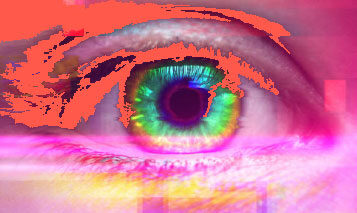
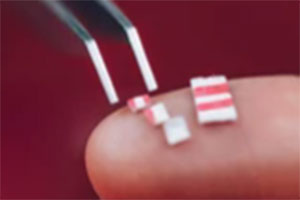
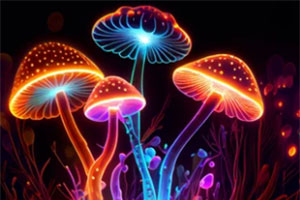
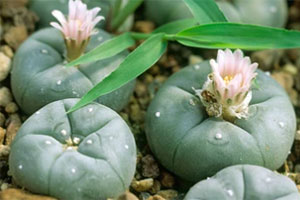


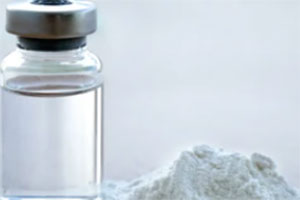





Paul Scott - 1999
Looking forward to part II. I have been curious about what the research indicates. I hope for a breakthrough for anyone with mental health struggles. Thanks for covering the topic, Vic!
Reply
Jesse Slatt
Never knew that about the Greek! Very cool!
Reply